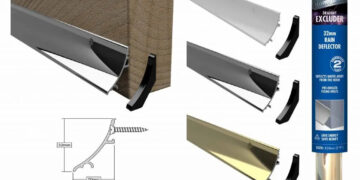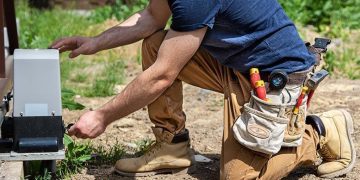Access flooring pedestals are a critical component of raised access flooring systems, providing support, adjustability, and flexibility in a variety of settings. Whether you’re designing a modern office, a data centre, or a retail space, understanding these pedestals and their functions is essential. This article delves into what access flooring pedestals are, how they work, and their various applications.
What Are Access Flooring Pedestals?
Access flooring pedestals are vertical support structures used in raised flooring systems. They act as the backbone of the system, elevating the floor panels above the subfloor to create an accessible void underneath. This void is typically used for housing utilities such as cables, wiring, and HVAC systems.
These pedestals are adjustable in height, allowing for flexibility in installation to accommodate uneven subfloors or specific project requirements. Made from durable materials like galvanised steel or aluminium, they are designed to support heavy loads and provide long-term stability.
Key Components of Access Flooring Pedestals
Understanding the components of a pedestal system helps clarify its functionality. Here are the main parts:
- Base Plate
The base plate provides stability by anchoring the pedestal to the subfloor. It distributes weight evenly to prevent shifting or tilting. - Pedestal Head
The pedestal head supports the floor panel and often includes features like sound insulation pads or anti-slip coatings. - Adjustable Rod or Stem
The rod or stem connects the base plate and the pedestal head. It is adjustable to allow for precise height calibration. - Locking Mechanism
Many pedestals include a locking mechanism to secure the desired height and prevent accidental movement during use.
How Do Access Flooring Pedestals Work?
Access flooring pedestals function by creating a modular, elevated flooring system. Here’s a breakdown of their operation:
- Installation on the Subfloor
Pedestals are securely fixed to the subfloor using adhesive or mechanical fasteners. This ensures stability and prevents movement. - Height Adjustment
The adjustable stem allows installers to set the height of the pedestals, ensuring the raised floor is level, even on uneven subfloors. - Support for Panels
Floor panels are laid on top of the pedestal heads, creating a continuous surface. The panels can be easily removed for access to the utilities beneath. - Load Distribution
The pedestals evenly distribute the weight of the floor and any equipment placed on it, ensuring durability and safety.
Applications of Access Flooring Pedestals
Access flooring pedestals are used in a wide range of environments. Below are some of their most common applications:
- Data Centres
In data centres, the void created by the pedestals houses cooling systems and cables, ensuring efficient operation and easy maintenance. - Office Spaces
Raised floors in offices allow for flexible cable management, making it easier to reconfigure workspaces. - Retail Spaces
Pedestals enable underfloor utilities in retail environments, ensuring a clutter-free and visually appealing space. - Healthcare Facilities
Hospitals and clinics use raised flooring systems to accommodate medical equipment wiring while maintaining hygiene standards.
Advantages of Access Flooring Pedestals
The use of access flooring pedestals offers numerous benefits, including:
- Flexibility
Pedestals allow for height adjustments, making them suitable for a variety of construction needs and uneven subfloors. - Improved Cable Management
The underfloor void provides a convenient space for cables, reducing clutter and improving safety. - Enhanced Air Circulation
HVAC systems can utilise the void for air distribution, improving energy efficiency in buildings. - Ease of Maintenance
The modular design of raised flooring systems allows for quick access to utilities, reducing maintenance time and costs. - Durability
Made from high-strength materials, pedestals can support heavy loads and withstand wear and tear.
Types of Access Flooring Pedestals
Access flooring pedestals come in various types to suit different requirements. Some of the most common types include:
- Fixed Height Pedestals
These are non-adjustable and are used in spaces where the subfloor is already level. - Adjustable Pedestals
Ideal for uneven subfloors, these pedestals can be adjusted to achieve the desired height. - Heavy-Duty Pedestals
Designed for environments with high load requirements, such as industrial facilities. - Anti-Static Pedestals
These are used in spaces like laboratories and data centres, where static electricity can pose a risk.
Choosing the Right Access Flooring Pedestals
When selecting pedestals for a project, consider the following factors:
- Load-Bearing Capacity
Ensure the pedestals can support the expected weight, including heavy equipment. - Height Requirements
Determine the desired height of the raised floor and choose pedestals that offer the necessary adjustability. - Material
Opt for durable materials like galvanised steel for long-lasting performance. - Environment
Consider environmental factors such as humidity, which may require corrosion-resistant pedestals.
Maintenance Tips for Access Flooring Pedestals
Proper maintenance can extend the lifespan of your access flooring system. Here are some tips:
- Regular Inspections
Check for loose or damaged pedestals and tighten or replace them as needed. - Clean Underfloor Voids
Keep the void free from dust and debris to ensure optimal performance of utilities. - Check for Corrosion
Inspect metal pedestals for signs of rust and treat them promptly to prevent further damage.
Innovations in Access Flooring Pedestals
The industry is continuously evolving, with new innovations improving pedestal performance. Recent advancements include:
- Eco-Friendly Materials
The use of recycled and sustainable materials is becoming more common. - Quick-Install Systems
Innovations in pedestal design have reduced installation times, making the process more efficient. - Smart Pedestals
Some pedestals now include sensors for monitoring weight and environmental conditions.
Conclusion
Access flooring pedestals are an indispensable element of modern construction, offering versatility, durability, and convenience. By elevating floor panels, they create a functional void that simplifies cable management, enhances air circulation, and improves workspace flexibility. Understanding the components, functionality, and benefits of these pedestals can help you make informed decisions for your next project. Whether you’re outfitting an office, a data centre, or a retail space, access flooring pedestals are a reliable and efficient solution.
- accessflooring
- accessflooring












































